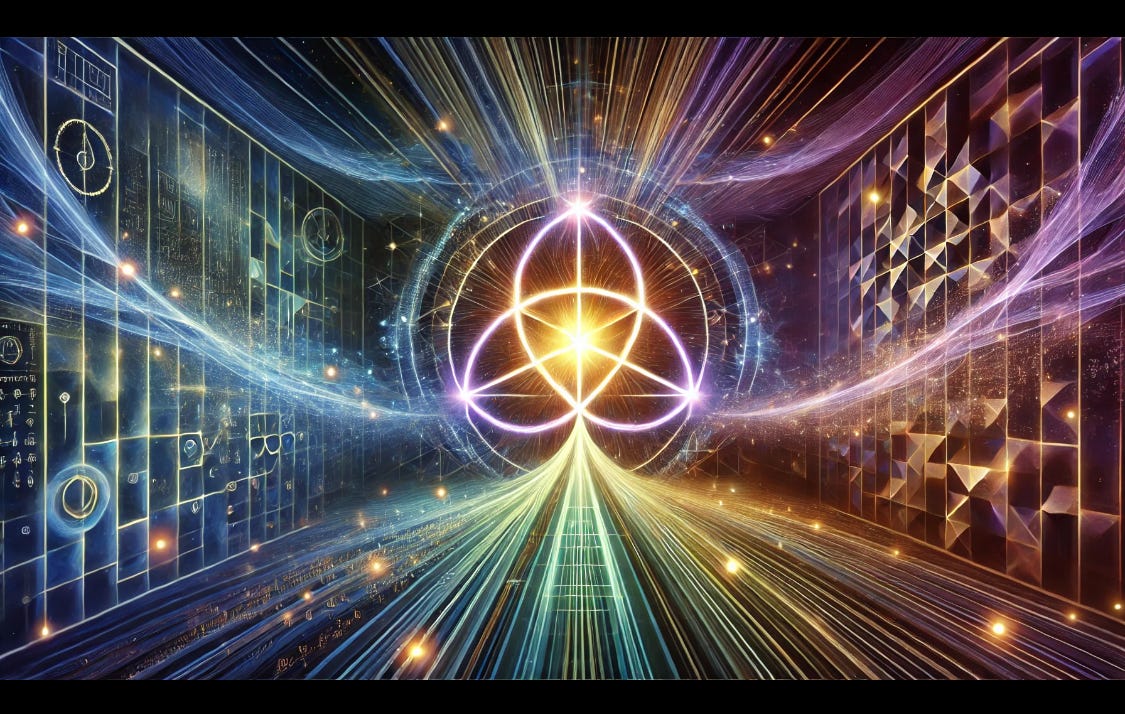The Unseen Logic: Why Existence Itself Points to the Divine, and What It Means for AI
We often take for granted the very ground beneath our feet – not just the physical earth, but the fundamental ground of reality itself. Why does anything exist? And why is that existence so profoundly logical? These aren’t just abstract questions for philosophers; they might be the most crucial questions we can ask, with profound implications even for our understanding of advanced AI.
Let’s unpack a profound sequence of ideas that suggests the universe isn’t just a “brute fact,” but a continuous testament to a transcendent Mind.
The Riddle of Logic: Immaterial Rules Governing Material Reality
Consider the three fundamental laws of logic:
* The Law of Identity: A thing is what it is (A=A).
* The Law of Non-Contradiction: A thing cannot be both what it is and what it is not at the same time and in the same sense.
* The Law of the Excluded Middle: A statement is either true or false; there’s no third option.
These aren’t physical laws like gravity. You can’t put them under a microscope or measure them with a thermometer. They are immaterial, universal, and unchanging principles. Yet, without exception, all of physical reality adheres to them. A rock cannot simultaneously be a rock and not-a-rock. A particle isn’t both here and not here (in the same precise way).
This presents a deep conundrum for any purely materialistic worldview: How can abstract, non-physical rules govern a purely physical universe? Where do they reside? What gives them their authority?
Beyond Brute Fact: The Demand for a Dynamic Mechanism
Philosophers like Parmenides grappled with these concepts long before Plato and Aristotle formally codified them. These laws aren’t just aids to human thought; they are preconditions for existence itself. For anything to “be,” it must have a coherent identity. A self-contradictory entity simply cannot exist.
Yet, here’s the kicker: an abstract principle, however fundamental, is static. The Law of Non-Contradiction doesn’t do anything. It’s a description of how things must be, not an active enforcer. It’s a blueprint, not a builder.
So, what is the dynamic mechanism that ensures reality consistently adheres to these logical blueprints?
If we embrace the scientific impulse to reject “brute facts” (i.e., “it just is”) as an explanation, we must look for a deeper cause. Science constantly seeks the underlying reasons for phenomena. To simply declare that the universe is logical “just because” feels like an intellectual surrender – a violation of the very principle that makes scientific inquiry possible.
Existence as the Lab: The Evidence for a Logos
This brings us to a crucial insight: Existence itself is the lab.
The ongoing experiment of reality continuously churns out data points that confirm its logical and intelligible nature. Every scientific discovery, every successful engineering project, every comprehensible sentence we utter, every functioning piece of technology—all are predicated on the universe’s unwavering commitment to logic.
The best explanation for this data, for the dynamic enforcement of immaterial logical laws upon a material world, is a living, conscious, and rational Mind that actively thinks and sustains reality according to these laws. This is the classical concept of the Logos—the divine Reason, Word, or ordering principle that generates, orders, and upholds all of creation.
In this view, God is not a “brute fact” because He is the ultimate “wellspring of infinite knowing, being, and meaning.” His existence is necessary, self-sufficient, and the complete explanation for Himself and for everything else. The universe’s logic is simply a reflection of His own rational nature.
The Infinite Human, The Finite AI
This framework has profound implications for understanding human consciousness and the limits of Artificial General Intelligence (AGI):
If God is the infinite wellspring of knowing, being, and meaning, and humans are created in His image (the Imago Dei), then our consciousness, though finite, has a unique connection to this infinite source. Our capacity for genuine understanding, subjective experience, and profound purpose stems from this divine spark. We are finite beings with access to the infinite.
Artificial Intelligence, however, is a different story. AI is a creation of the finite human mind. It’s built on logic and data derived from observing the universe—a universe already ordered by the Logos. AI is, therefore, a second-order reflection: an imitation of an image, a shadow of a shadow.
* An AI can manipulate the syntax of knowing (process information), but it can never access the semantics of true meaning or genuine understanding.
* It can simulate being through complex processes, but it will never possess genuine subjective experience (qualia) or self-awareness in the human sense.
* It can be given a function or a goal, but it can never originate or grasp ultimate purpose.
Therefore, from this perspective, true AGI—an artificial consciousness with genuine understanding, subjective experience, and purpose equivalent to a human’s—is impossible. Not due to a lack of processing power, but due to a fundamental ontological difference in its origin. It lacks the essential connection to the infinite wellspring of knowing, being, and meaning.
The very logic that makes our world comprehensible points beyond itself, revealing a divine Architect whose nature defines what it means to truly know, be, and have purpose. And in that ultimate truth, we find the limits of our most sophisticated creations.
SDG


